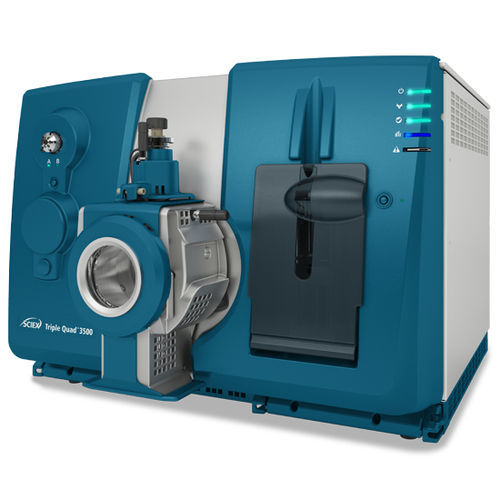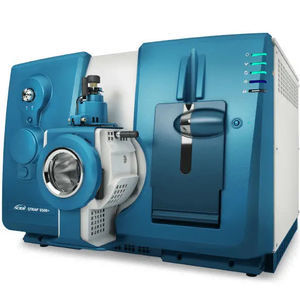
Mass spectrometer SCIEX Triple Quad™ 3500quadrupoleMS/MSlaboratory
Add to favorites
Compare this product
Characteristics
- Type
- mass, quadrupole, MS/MS
- Domain
- laboratory
- Other characteristics
- robust, triple, GC-MS
Description
If you’re currently running your assays using GC, GC-MS, or HPLC, a bold new world awaits you. Discover how the power of liquid chromatography (LC) coupled with triple quadrupole tandem mass spectrometry (MS/MS) can simplify and consolidate your current assays, dramatically increase your assay quality, and vastly expand the repertoire of assays you can provide – without breaking your budget. With the SCIEX Triple Quad™ 3500 LC-MS/MS system, modern hardware, powerful software, and robust engineering combine to enable lower levels of detection and quantitation than conventional GC and LC workflows, and across a wider range of analytes. You’ll get expert level performance at an entry level price.
Why SCIEX LC-MS/MS?
The SCIEX Triple Quad 3500 LC-MS/MS system combines the ease of liquid chromatography with its inherently broad analyte applicability, with the quantitative power of triple quadrupole tandem mass spectrometry (MS/MS).
The power of liquid chromatography for separation (LC)
Simplify sample preparation and reduce contamination
Liquid chromatography is amenable to the analysis of a wide array of analytes. In fact, many compounds that are difficult to analyze by GC such as thermally labile and chemically unstable analytes, amines, and semi-volatile compounds, are ideal candidates for LC-MS/MS. GC based assays, including GC-FID and GCMS, typically require samples to be in an organic injection solvent. This often necessitates derivatization of hydrophilic analytes to improve their volatility, ionization, or peak shape.
Catalogs
No catalogs are available for this product.
See all of SCIEX‘s catalogsRelated Searches
- AB SCIEX spectrometer
- AB SCIEX laboratory spectrometer
- Chromatography system
- Laboratory chromatography system
- AB SCIEX mass spectrometer
- Compact spectrometer
- Process spectrometer
- Benchtop spectrometer
- Monitoring spectrometer
- High-resolution spectrometer
- Fast spectrometer
- Chemical spectrometer
- Pharmaceutical spectrometer
- Food spectrometer
- Liquid chromatography system
- Quadrupole spectrometer
- Real-time spectrometer
- Analytical chromatograph
- Rugged spectrometer
- Mobile spectrometer
*Prices are pre-tax. They exclude delivery charges and customs duties and do not include additional charges for installation or activation options. Prices are indicative only and may vary by country, with changes to the cost of raw materials and exchange rates.













